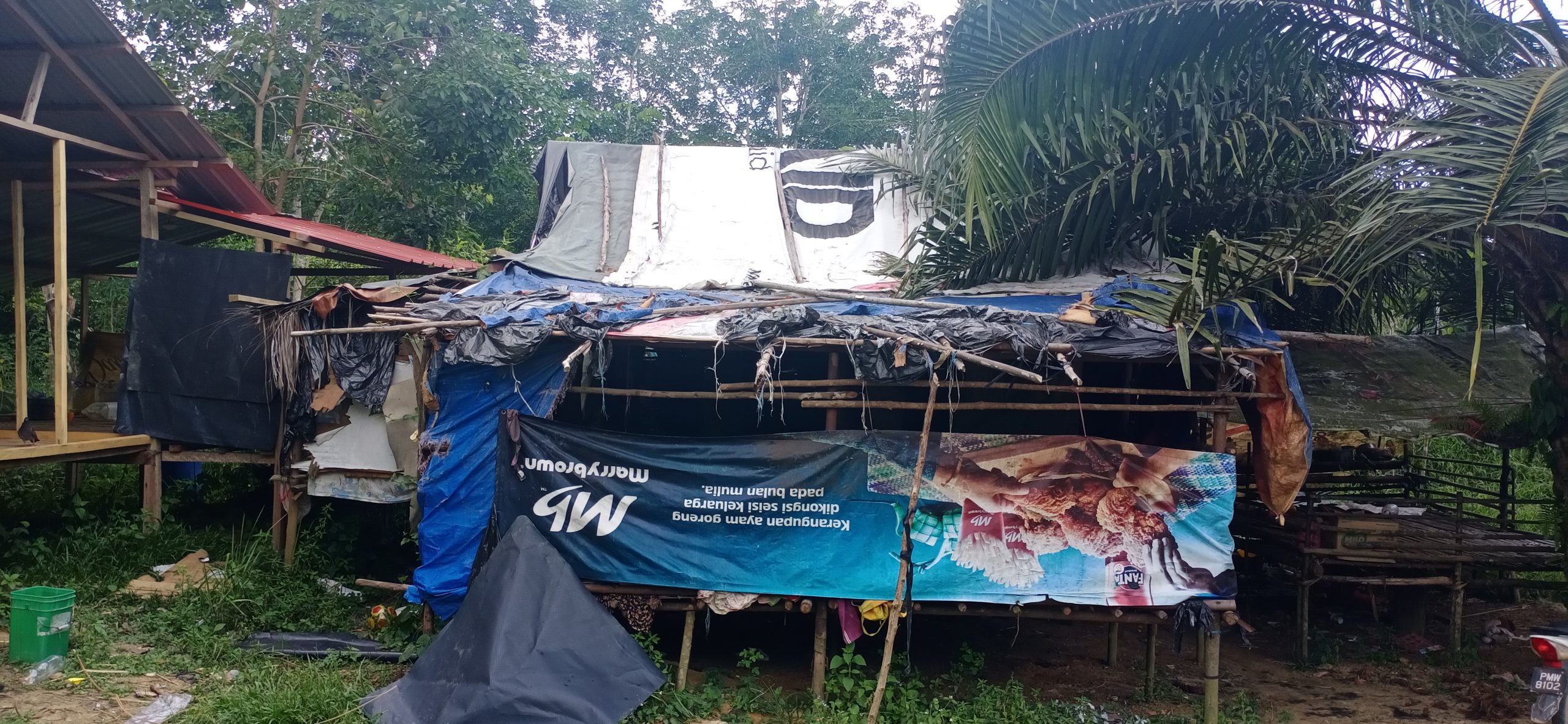Throughout my existence, I have never given much thought of the Orang Asli. Maybe I am too comfortable with living a privileged lifestyle to the extent that I didn’t have to think about it.
Throughout my first few weeks of internship, I had little to no expectations towards the Orang Asli community and I was only able to learn of the community and their issues through videos, pictures and reports. All I could conclude was that there’s no way they are still living in conditions that lacked basic necessities. It’s the 21st century! With a lot of NGOs and aid from the government to help them, how are they still living in traditional wooden houses? How ignorant, selfish and inhumane of me to think as such. I did not understand much about the community until the day I finally had the chance to experience it in Muadzam Shah, Pahang.

Dilapidated house in Kg. Bukit Biru, villagers used tarps to cover ceiling and walls
The bumpy journey into the village was both thrilling and nauseating at the same time. Arriving at the first village, I let out a small, almost silent “Woah”.
My thoughts were unseemly fallacious because traditional wooden houses are actually cool! Views of the green, vast spaces between their houses felt utterly serene. Chaperoned by the sounds of birds and wind brushing through the trees, I felt at peace being away from the cacophony of the city- I guess it wasn’t so bad here after all.
My first encounter with the Orang Asli villagers was decent and it was nice seeing them talking so passionately about farming and how they really wanted their plants to grow. They weren’t shy or afraid to ask for more knowledge in order to grow their plants. This has been one of the things that has left an impression on me towards the community. Although most of them are illiterate, it is still amazing to see the effort they put in to learn and have a better future in farming. If the Orang Asli can, what’s stopping us, the more privileged ones, to do better?

The Rumah Adat in Kg. Teraling
Rumah adat symbolizes the culture and history of the Orang Asli community. In every village I visited, each had their own unique architecture. Some are built with merely traditional bamboo and dried banana leaves, while some used wood from the forest. Each of the rumah adat was built with passion, respect and love towards their culture.
It was a very exciting feeling when I first stepped into the rumah adat. Of course a city girl like me would be scared that it’ll collapse but I put my trust in their hardworking hands that it is built with high safety precautions on a stable ground. Once the pandemic is over, I can vividly imagine the festivities that will be held over at the rumah adat- Kids running around, the men carrying out their work and the women chatting happily while peeling onions. Oh what a time to be alive to actually experience it!

Sofyyana in Kg. Bukit Biru
Having to think back on my judgements towards the Orang Asli community utterly disgusts me. I am ashamed of myself for having thoughts as such and the trips to Muadzam Shah have opened my eyes to the resilience and beauty of the community. It’s true that it takes an experience to understand a certain situation. You wouldn’t know until you experience it yourself.
3 months seems like a long time but God knows how fast it went by for me. If only I could extend my internship period at Global Peace, I would be the happiest to spend more time going into the villages of the Orang Asli in Pahang. I would love to get to know more of how things work in the village and would want to get a better understanding of what they’re going through daily so that it’ll help me to be more open minded towards their culture.
Written by:
Sofyyana Sofhan, Associate Intern








